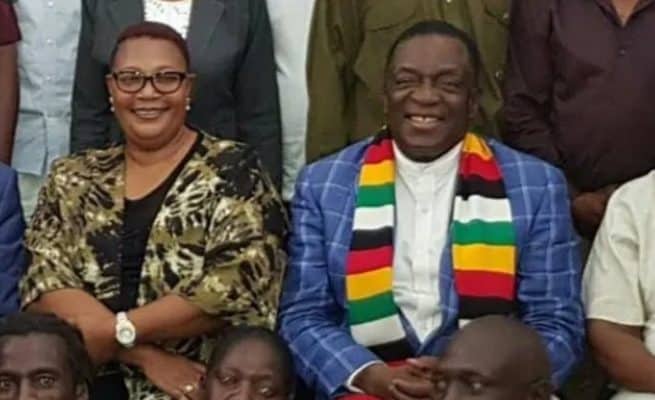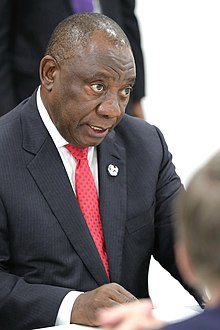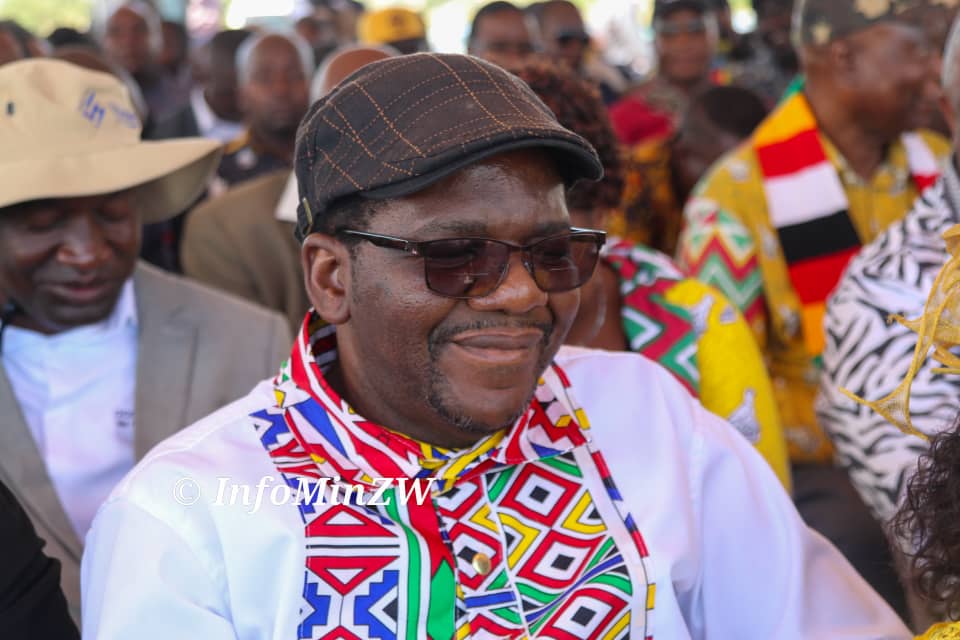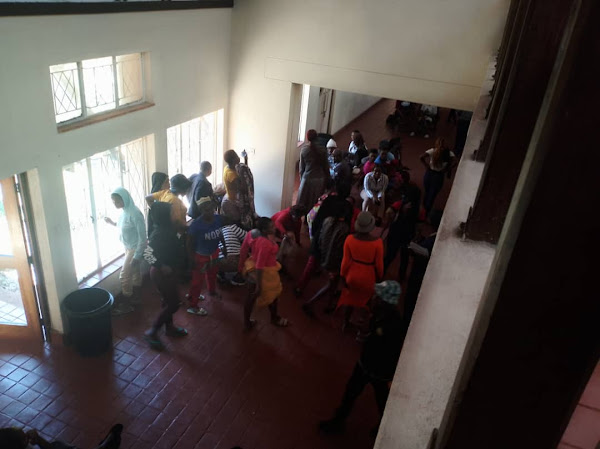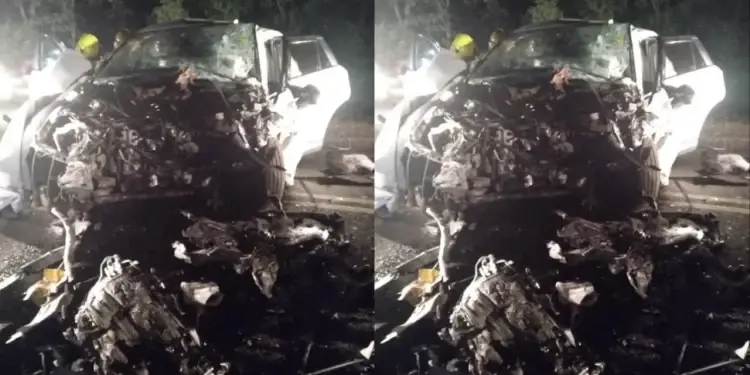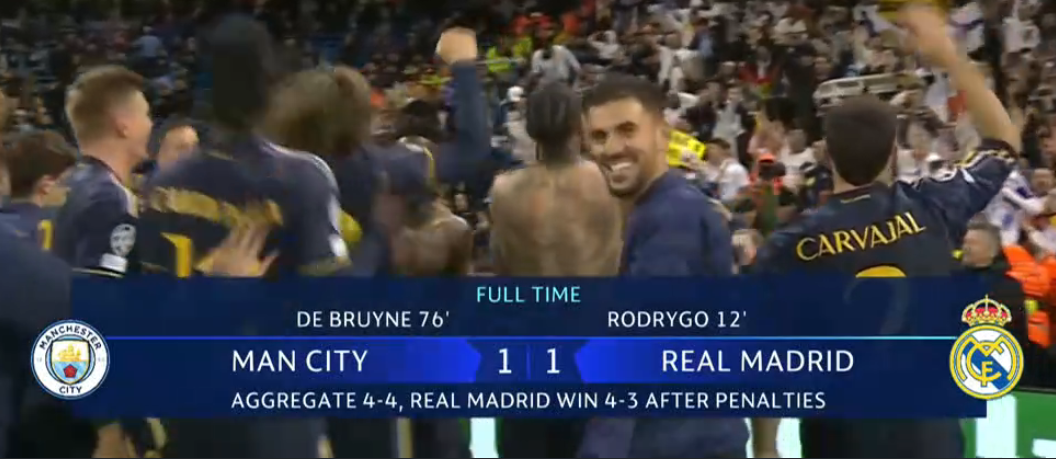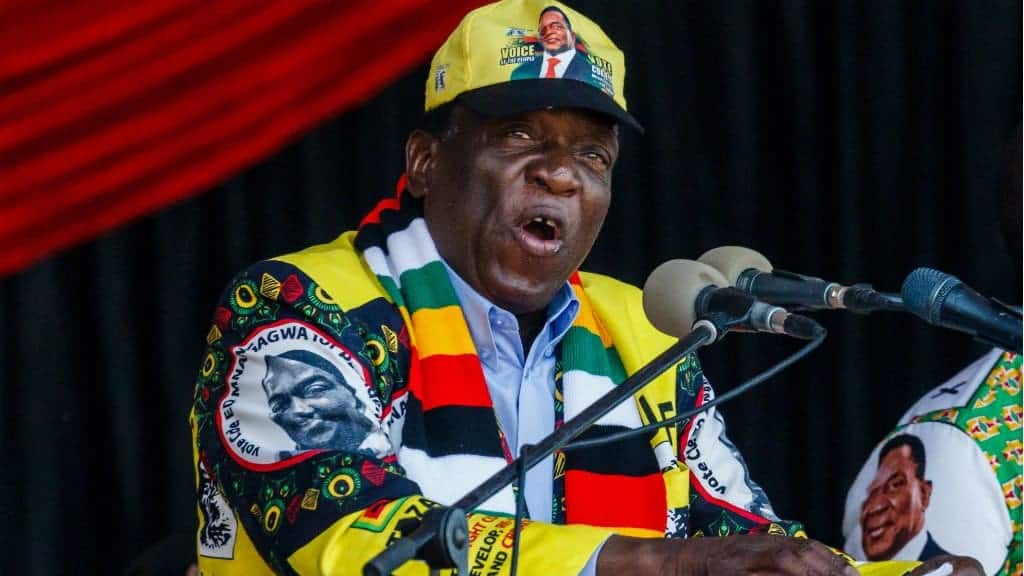“We are Everything.
“We must be respected. We are the majority. We are the people. We are the government. We are the army. We are the air force. We are the police. We are everything you can think of. We determine who can do mining in Zimbabwe. We determine who can construct a railway line in Zimbabwe. We determine who can build a road in Zimbabwe. No other party can do so!” Said Mnangagwa the other day.
This was Zimbabwe’s leader, Emmerson Mnangagwa a few years ago. He was speaking at a political gathering. At the time, he was deputising Robert Mugabe.
In one sense, the words were a description of the totality of control that ZANU PF held over the State and its institutions. Since 1980, there has been a conflation of party and state, which has left the latter completely emasculated.
In another sense, the words represented Mnangagwa’s vision of his kind of state; a typically totalitarian state in which the ruling party controls virtually everything and the opposition plays a meaningless role.
For Mnangagwa, the opposition is no more than a nuisance. If it is to be allowed, it is merely for purposes of appearances; a gimmick to hoodwink the rest of the world. If it cannot be obliterated, it must be controlled[1] . This is a state in which critique of the government is not permitted. Citizens must toe the line.
It is a system where patronage dominates, ahead of merit. There is a very small caste of elites which is engaged in a process of grand accumulation of personal wealth on the back of public resources. The type of state Mnangagwa is establishing is called a kleptocracy.
The Dictators’ Playbook
In the three years since he usurped power from Robert Mugabe, Mnangagwa has demonstrated an unrelenting willingness and zeal to achieve his vision of a controlled and pliable opposition.
This much is evident in how he has shut down democratic space by using the military to kill protestors in cold blood and detaining political opponents and activists on spurious charges.
The detention of political activists is now commonplace. By denying them bail and keeping them in filthy prison cells, the Mnangagwa regime is applying a strategy of detention without trial, commonly found in dictatorial regimes. These political activists are literally serving sentences before and without trial. When they are finally released on bail, they are kept on remand for long periods.
During this time, their political freedoms are tightly restricted by severe bail conditions. Eventually the courts let them go because the case would have gone cold.
The reality is that the state never had a credible case in the first place. It’s a strategy of lawfare, whereby the law is weaponised against political opponents and critics. It also includes selective application of the law, whereby rules are applied differently depending on the political totem of the individuals.
Those carrying the opposition totem are pursued relentlessly by the authorities, while members of ZANU PF are spared or treated with kid gloves. In this strategy of lawfare, Mnangagwa has roped in the police, the army, the prosecution and the judiciary, lending the systematic abuse a false coat of legality.
Basic political rights, such as freedom of expression or the right to demonstrate exist only on paper. In practice, they have been severely restricted.
Human rights abuses by state agents including torture and abduction are not investigated. Instead, protestors against these abuses are detained. This is why Takudzwa Ngadziore, President of the Zimbabwe National Students’ Union is in jail, while the abductors and torturers of Tawanda Muchehiwa, whose cause he was championing, are walking free.
In another case, the state is going hard against Joana Mamombe, a victim of abduction and torture who is suffering from anxiety and depression as a result.
Yet it has no appetite to investigate cases of abduction and torture. When he appointed a Commission of Inquiry to investigate the post-election violence in 2018, and the Commission recommended the investigation and prosecution of offenders, Mnangagwa simply ignored it. No one has been prosecuted for the cold-blooded murders of six civilians.
Furthermore, using the dictators’ playbook, Mnangagwa has embarked on a mission to change the Constitution in order to consolidate power in his office.
This is what the continent’s first generation of dictators did soon after independence. They amended the constitutions to centralise power in the office of the president.
If successful, the proposed changes will be a major reversal of the gains of the constitution-making process that produced the current Constitution in 2013.
Annihilation
However, Mnangagwa’s dictatorial streak has been most evident in his tireless scheming to annihilate and take control of the main opposition political party, the MDC Alliance.
Dictators prefer to rule without opposition. If there is any opposition, they would like to control it. For Mnangagwa, the strategic goal is very simple: to weaken the MDC Alliance by taking control of it through his surrogates.
To be sure, he did not create the fault-lines in the opposition. But their existence presented an opportunity which he has fully exploited in his strategy to gain control of the opposition.
In them, he found an instrument to accentuate the divisions and go after the major threat to power represented by the MDC Alliance led by Nelson Chamisa. The endgame is clear: to weaken the MDC Alliance so much that ZANU PF will be left without any serious political competition.
Mnangagwa’s strategic goal is not just a threat to the MDC Alliance as an institution but to the very idea of political pluralism and serious opposition politics in Zimbabwe.
It examines how Mnangagwa is using the apparatus of the state and surrogates in the opposition to systematically and methodically destroy the idea of political pluralism in Zimbabwe, leaving him and ZANU PF with untrammelled power.
What happened at the elections?
To understand Mnangagwa’s strategy to control the opposition, it is useful to present the position after the 2018 general elections. The main opposition contested the election as the MDC Alliance, originally a coalition of 7 political parties.
When the then leader and presidential candidate, Morgan Tsvangirai died in February 2018, he was succeeded by Nelson Chamisa. The succession was not without controversy, but Mnangagwa himself duly recognised that Chamisa was his opponent and the MDC Alliance was a political party.
That the MDC Alliance was a political party under the electoral law was never in doubt. Zimbabwe’s Electoral Law recognises political parties and independents. Political parties might form a coalition, but the law does not recognise coalitions.
It only recognises political parties. Therefore, the MDC Alliance presented itself before the Zimbabwe Electoral Commission (ZEC) as a political party and it was recognised as such. Candidates were nominated as candidates of the MDC Alliance.
The formula for calculating proportional representation seats recognised the MDC Alliance as a political party. When Chamisa challenged results of the election, even the Constitutional Court recognised the MDC Alliance as a political party.
I make extensive reference to this recognition to highlight the absurdity of the claims in recent months that seek to delegitimize the status of the MDC Alliance as a political party. It’s nothing more than political gamesmanship designed to exclude and dismember the main opposition from the political community.
The MDC Alliance came second to ZANU PF, with more than 100 seats in Parliament and 28 out of the 32 urban local authorities. Its presidential candidate Chamisa was adjudged second to Mnangagwa, although this outcome has remained a point of contention.
Both Mnangagwa and Chamisa shared the lion’s share of the national vote, each getting more than 2 million votes. The nearest candidate was so far behind that her presence barely registered on the electoral scale.
Thokozani Khupe had just 45,000 votes and her party, the MDC-T got only 2 seats in Parliament, both based on proportional representation. I mention this to highlight the attempt in recent months to exclude Chamisa while attempting a miracle of resurrection of Khupe’s status as the legitimate opposition leader.
Mnangagwa’s animosity towards Chamisa is the latter’s refusal to give loser’s consent after the election. Mnangagwa needed it for his political legitimacy. He was desperate for Chamisa and the MDC Alliance to concede defeat.
This did not happen and it hurt Mnangagwa and ZANU PF badly. When Mnangagwa formed a multi-party dialogue platform, the MDC Alliance refused to join it, a snub which also irked Mnangagwa.
The MDC Alliance also used its presence in Parliament to wage protest at Mnangagwa’s alleged illegitimacy. Whenever Mnangagwa appeared in Parliament, the MDC Alliance MPs either walked out or jeered him.
This added salt to Mnangagwa’s wounded ego. It was a highly effective protest strategy, considering the vicious nature of the response from Mnangagwa. Mugabe had faced similar protests before, but then Mugabe had long given up on seeking to be liked by the rest of the world.
Mnangagwa, on the other hand, has been desperate for acceptance. The rejection by the MDC Alliance hurt him terribly. At one point, the head of Parliament, a member of ZANU PF’s Central Committee, vindictively threatened to dock MDC Alliance MPs’ sitting allowances after they walked out on Mnangagwa.
The acrimony escalated and over the last two years, Mnangagwa has changed strategy from trying to co-opt the MDC Alliance to elimination and control.
But let us begin with the initial strategy of co-optation. He has, to put it figuratively, gone for the jugular. Mnangagwa’s background is in intelligence and he has experience of snuffing out opponents.
He has found willing agents within the opposition ranks to achieve his goal. These agents think they are smart strategists, but they are mere pawns in the hands of Mnangagwa. When they have served their purpose, he will dump them as quickly as he picked them.
Co-optation
Office of Leadership of the Opposition
The first move Mnangagwa made after the controversial and disputed elections in 2018 was to announce that he wanted to create an Office of Leader of the Opposition. This would be a fully funded office operating along the lines of the British system, where the Leader of the Opposition is properly and officially recognised as part of the constitutional system.
This office, with all the trimmings, would give something to the losing candidate in a presidential election.
The idea was that Nelson Chamisa would take this office, giving him some comfort. It was a sweetener, following the bitter election experience in which he felt cheated. However, this was not an offer that Chamisa was willing to accept.
In any event, Mnangagwa never made official moves to create such an office. If he meant it well for purposes of improving the country’s governance system, Mnangagwa could have gone ahead to establish the office. He did not need Chamisa’s consent to do it. The reality is that this new office was always meant as a carrot to co-opt Chamisa and keep him quiet.
Political Actors Dialogue
The second attempt at co-optation was when Mnangagwa formed the Political Actors Dialogue (POLAD), purportedly to bring the ruling party and opposition parties into some form of dialogue.
Mnangagwa extended the invitation to all opposition political parties that had contested in the 2018 general elections. It was like a general assembly of all parties with Mnangagwa as the chairman.
Chamisa and the MDC Alliance saw this as a deceptive move by Mnangagwa to avoid the big questions over a dispute which they saw a bilateral between them as the two biggest political players who had a dispute.
They feared Mnangagwa’s strategy was to drown their voice in a sea of surrogate political parties which were grouped under POLAD.
The MDC Alliance therefore refused to participate in POLAD. This frustrated Mnangagwa and ZANU PF. Not even the enthusiasm shown by Thokozani Khupe and her MDC-T outfit assuaged Mnangagwa’s discomfort.
It was the MDC Alliance that he wanted the most in POLAD. The rest of the parties were there to serve the purpose of drowning out the voice of the MDC Alliance but on their own, they were not much useful.
POLAD gave the impression to the outside world that Mnangagwa was talking to opposition parties, but without the participation of Chamisa and the MDC Alliance, the façade was blown off.
This did not deter the rest of POLAD who took to the gravy train. They were serving their personal interests. They had been soundly rejected by the voters in the 2018 general elections.
They had no political future except by hanging on to the coattails of ZANU PF. POLAD gave them a sense of purpose and they began to feel useful and self-important.
But they were never going to bite the hand that fed them and Mnangagwa knew their weakness because they did not have any political following. True to form, they soon began to speak the language of ZANU PF, becoming an opposition to the opposition.
They opposed the MDC Alliance more than they were opposing ZANU PF. They had well and truly been co-opted.
Elimination and Control
Having failed to co-opt Chamisa and the MDC Alliance, Mnangagwa changed the strategy from co-optation to elimination. The end game is to remove Chamisa and the MDC Alliance from the political map and ensure ZANU PF is surrounded by a pliant opposition that does its bidding.
The strategy of elimination is wrapped by a veneer of legality and makes use of key apparatus of the State and elements of the opposition under POLAD.
Mnangagwa saw a fault-line in the MDC Alliance. He did not create it, but he exploited it. It was that the succession of the late founding leader, Morgan Tsvangirai had been fraught with internal irregularities, when first he appointed two extra deputies in 2016 and second, Chamisa ascended to the throne following his death.
Nevertheless, the MDC Alliance had since resolved these irregularities based on the principle of majority rule. Chamisa had contested the 2018 presidential elections and in 2019, the party had held a Congress which was endorsed by the majority.
Nevertheless, there was a legal challenge which was launched soon after the Constitutional Court judgment on the presidential elections. That legal challenge, by one Mashavira was challenging Chamisa’s presidency of the MDC-T, the main member of the MDC Alliance.
Mashavira was a tortoise on a lamppost. He was a surrogate of disgruntled members of the MDC-T leadership who opposed Chamisa.
The turning point came when the Supreme Court delivered a judgment 31 March 2020, effectively ruling that Chamisa was illegitimate.
Suddenly, the main opposition leader had been hit with the same weapon that he had hurled at Mnangagwa: illegitimacy.
The Supreme Court ordered that an Extraordinary Congress was to be held within a period of 4 months and gave the Acting Presidency of the MDC-T for that period to Thokozani Khupe.
This meant Khupe, who had lost dismally with her outfit which she called the MDC-T was now in charge of the party which formed the largest portion of the MDC Alliance.
Some unhappy members of the MDC Alliance who had lost at the Congress in 2019 jumped ship and joined Khupe. It was their opportunity to hit back at Chamisa, whom they accused of having sidelined them in the MDC Alliance.
Douglas Mwonzora, Elias Mudzuri and Morgan Komichi had all lost at the MDC Alliance Congress in May 2019. In Khupe, Mwonzora, Komichi and Mudzuri, Mnangagwa had a core group that had more than sufficient incentives to go after Chamisa and they did so with great zeal.
The existence of the Supreme Court judgment gives the impression of legality; indeed, that there were no political machinations and it was all because of Chamisa and the MDC Alliance’s fault that they had broken the Constitution.
But the decision was deeply flawed. Previous analysis of the Supreme Court judgment has shown that the case was moot, a point that the judge accepted.
The irregularities had been corrected internally. Indeed, the judge acknowledged that it was water under the bridge. And yet, incredibly, the judge made a u-turn and went on to give an order which opened the floodgates to the madness that followed.
The judgement literally was the proverbial cat that had been thrown among pigeons. It created a new opposition party, which I have previously referred to “the judicially reconstructed MDC-T”.
Its mandate comes from the court. It was literally reconstructed by the court because the constitutional mandate of the MDC-T executive elected at the 2014 Congress had expired in November 2019.
It was given up to 4 months to hold an Extraordinary Congress to choose a leader. Its mandate is therefore very specific both in time and substance.
I had previously warned that the High Court judgment, which preceded and was confirmed by the Supreme Court was an existential threat to the MDC Alliance. I had foreseen how it could be weaponised against the MDC Alliance.
Much of what has happened since the Supreme Court judgment has confirmed the prognosis in that old BSR. Suddenly, a party that was running steadily and providing solid opposition to Mnangagwa and ZANU PF has become imperilled.
The very existence of the MDC Alliance is at stake. A few examples of what happened since then will illustrate this existential crisis.
Removal of MPs
First, the new judicially reconstructed MDC-T claimed that it had the power to recall elected representatives of the MDC Alliance both in Parliament and local authorities. The Constitution of Zimbabwe has a clause which allows a political party to recall an MP or councillor if they have ceased to be members of the party.
The judicially reconstructed MDC-T argued that MPs and Councillors who had been elected under the MDC Alliance but came from the MDC-T were their members. This was resisted by the MDC Alliance.
However, the decision as to who between them was correct was in the hands of the Speaker of Parliament and the President of the Senate. Both are senior ZANU PF leaders.
Chamisa and the MDC Alliance simply had no chance as the political referees are both ZANU PF. Effectively, Mnangagwa was, through the Parliamentary officials, sitting in judgment of who to recognise as the opposition between his nemesis Chamisa and the already co-opted Khupe.
Unsurprisingly, he chose Khupe ahead of Chamisa when the Speaker and the President of the Senate accepted the notices of recall from the judicially reconstructed MDC-T.
This was the first ominous sign of reversal of the MDC Alliance’s electoral gains at the 2018 elections. The party no longer had a legal claim to the MPs and Councillors who were elected under its ticket.
That right had been given to the judicially reconstructed MDC-T. This led to an absurdity where Khupe, who had lost dismally in the 2018 elections was now in charge of a party that she had not only contested against; but that party had also defeated her.
Mnangagwa had managed to turn the tables against Chamisa, first lumping the illegitimacy label on him through the dubiously reasoned judgment and second, by usurping Chamisa’s MPs and Councillors and handing them over to Khupe.
Fundamentally, Mnangagwa had wiped off his rival’s claim to democratic space in Parliament, a serious affront to the principle of democratic representation.
Replacing MPs and Councillors
The second was giving power to replace those MPs and Councillors to the judicially reconstructed MDC-T. There are two types of seats in Parliament, namely constituency-based seats which are filled through the First Past the Post election system and party-list proportional representation seats, which are filled by a party nominating preferred candidates.
The latter are uncontested. The Zimbabwe Electoral Commission awarded the right to replace party-list PR MPs to the judicially reconstructed MDC-T, taking it away from the MDC Alliance.
This is despite the fact that the original MPs were on a party-list submitted by the MDC Alliance. These two processes: recalls and filling vacancies meant the democratic will of the voters had been subverted and replaced by the choice of a few political elites in the judicially reconstructed MDC-T.
To put it bluntly, the main opposition had been attacked by being robbed of its elected representatives and the power to replace them when vacancies arose. Instead, that power had been handed to the judicially constructed opposition which is not only co-opted but is essentially doing Mnangagwa’s bidding. It’s a process of undermining the real opposition by creating a surrogate opposition.
Withdrawal of statutory funding
The third was to deprive the MDC Alliance of its funding. A political party qualifies for state funding under the Political Parties (Financing) Act if it meets a specific threshold of parliamentary representation.
The only two parties which qualified for state funding following the 2018 general elections were ZANU PF and the MDC Alliance. They got the first tranche of funding a few months after the elections.
When the second tranche came in 2020, the Government allocated the money to the judicially reconstructed MDC-T, effectively depriving the MDC Alliance.
This was despite the fact that there was a pending case at the Supreme Court concerning the distribution of these funds. The High Court had barred the Government from distributing the funds to the MDC-T. However, the Government went ahead and gave the money to the MDC-T in disregard of that order.
Seizure of party assets
The fourth was the state-assisted seizure of the MDC Alliance headquarters in Harare. For years, Morgan Tsvangirai House (formerly Harvest House), was the home of the opposition.
The judicially reconstructed MDC-T gained entry and took occupation of the building during the night. The MDC Alliance alleged that they were assisted by members of the security services, namely the police and the army.
Grabbing the party name
In recent days, the judicially reconstructed MDC-T has claimed that it will use the name MDC Alliance in the by-elections scheduled for December this year. They are saying so even though the party has already submitted names of nominees for party-list PR seats under the name MDC-T.
The aim is to deprive the MDC Alliance of a popular name. If the judicially reconstructed MDC-T is permitted to do this, it would not only be duplicitous but it would have completed a grand heist upon the country’s biggest opposition party.
Mnangagwa would have, through a surrogate party, managed to seize control of his main opponent. It would leave Chamisa and the MDC Alliance without a name, without headquarters, without MPs and Councillors. It would be the obliteration of the main opposition political party, leaving Mnangagwa with a pliable opposition, a situation that he has always preferred.
Rule with a controlled opposition
In the 1980s, Mugabe wanted to establish a one-party State. It never happened in the end, thanks to multiple sources of opposition to the idea, including from within his party. However, he managed to absorb and neutralise the strongest opposition party at the time, ZAPU, led by his long-time rival Dr Joshua Nkomo.
But Mugabe did not do it alone. One of his henchmen and key drivers of the process of obliterating ZAPU was Mnangagwa, then a young minister responsible for State Security.
Mnangagwa along with the late Perrance Shiri became the key enforcers of Gukurahundi, which left an estimated 20,000 civilians dead at the hands of the notorious 5TH Brigade and state security agents.
ZAPU was forced to capitulate in 1987, when after years of negotiations, it signed a Unity Accord with ZANU PF. ZAPU would never be the same again. The main opposition had been swallowed and co-opted through egregious use of violence.
Therefore, Mnangagwa has vast experience in snuffing out the opposition. That is the kind of politics he knows and loves: rule without opposition. This time he is doing it by using state institutions and pliable members of the opposition, creating a distance from himself, but also giving the process a deceptive veneer of legality.
To the casual observer, what is happening in the opposition are internal disputes between erstwhile comrades which has nothing to do with Mnangagwa. But seasoned observers can sense Mnangagwa’s iron-fisted touch in the process. He is the director of the machinations and he is running the puppet show. It is, after all, his surrogates in POLAD who are working flat out to steal from the MDC Alliance and electorate.
The Marondera absurdity
Take what has happened in the city of Marondera as an example. The municipality has 12 wards. 11 of them were won by the MDC Alliance in the 2018 elections. Only one went to ZANU PF. The judicially reconstructed MDC-T has recently recalled 5 of the MDC Alliance councillors, including the mayor of the city.
In the vote for a new mayor, the judicially reconstructed MDC-T got 3 votes while 3 of the councillors remained with the MDC Alliance. The ZANU PF councillor held the deciding vote. He chose the side of the judicially reconstructed MDC-T.
This resulted in a total subversion of the democratic will of the people, who had chosen the MDC Alliance to run their city. The judicially reconstructed MDC-T knew it did not have the support to install its preferred mayor.
To achieve its end, it had to recall the 5 MDC Alliance councillors which meant they could no longer vote. In this way, it managed to redefine the electoral playing ground. It did this with the aid of ZANU PF, which controls the Ministry of Local Government and whose lone councillor lent it the vote it needed to win the mayoral race.
In the overall scheme of things, Mnangagwa has one less MDC Alliance run local authority and more will now follow suit in the coming months.
The situation in Harare, the capital city is another example of attempts to subvert the will of the people and annihilate the MDC Alliance. The judicially reconstructed MDC-T recalled the mayor, Hebert Gomba and other councillors of the MDC Alliance. The plan was to instal a new mayor with allegiance to the judicially reconstructed MDC-T.
However, when the remaining councillors voted, the majority chose Jacob Mafume of the MDC Alliance. This made the situation difficult for the judicially reconstructed MDC-T because Mafume was never part of the MDC-T in the MDC Alliance. He was a member of PDP.
Faced with this impediment, the Mnangagwa regime had to devise a new plan. They dusted up a long-forgotten faction of the PDP, led by Lucia Matibenga, which claimed it had control over Mafume and was recalling him from council. It is an absurd situation but a typical illustration of the regime’s relentless efforts to remove the MDC Alliance from the political map.
Mnangagwa is trying to use all tricks in and outside the book to get rid of his fiercest opposition, replacing it with a puppet show that dances to his tune. The bid to remove Mayor Mafume failed this week when he obtained an interdict against recall.
It was a long shot by the chancer and it predictably failed. But the mere fact that he tried demonstrates the absurdities under the Mnangagwa regime.
Mnangagwa has not banned the MDC Alliance using any legal instruments, but he has marshalled institutions and opposition elements to achieve the same end. He discovered that it was easier to use divide and rule by exploiting existing divisions in the opposition.
He only needed to pick one side and give it ammunition in its fight against the other. The side he picked does not have the people, but it has the aid of ZANU PF, the State and its institutions.
Chamisa and the MDC Alliance must fight back. Their chance may come in the by-elections in areas that are traditionally their strongholds. But even then, the ever-scheming Mnangagwa will probably have another trick up his sleeve, even if it means unleashing raw violence, bribing voters or outrightly stealing the elections again.
There is, after all, an ZANU PF MP, Dexter Nduna who lost an election in the 2018 general elections, but he is still an MP today because the Zimbabwe Electoral Commission declared him the winner. The “mistake” was not corrected, and Nduna is still an MP today, two years after the elections.
Conclusion
The purpose of this article was to examine Mnangagwa’s strategy against the opposition. “The best way to control the oposition is to lead it,” is a quote that is attributed to Lenin. That is what Mnangagwa is trying to do in Zimbabwe, picking Thokozani Khupe from the political dustbin to install her as leader of the opposition.
He is more comfortable with an ally in opposition than with someone who presents a genuine threat to power.
At first, the strategy was based on deception. The aim was to co-opt Chamisa and the MDC Alliance by offering him the function of a British-style Official Leader of the Opposition, complete with perks of office.
He assumed a seat on the gravy train would keep Chamisa and his party quiet. It was an offer that could be rejected. His second option was to create a multi-party dialogue platform, which he would control, while Chamisa and the MDC Alliance’s voice were drowned out by the choir of small parties that were grateful for the trinkets. This too was rejected.
Chamisa and the MDC Alliance chose a strategy of disobedience in Parliament.
Mnangagwa got angry and threw the kitchen sink at his opponents. He switched from co-optation to a strategy of elimination and control. He would wipe the MDC Alliance off the political map and remain with an opposition that was firmly under his control.
In this regard, the pre-existing fracture in the opposition was a handy oportunity. It provided a channel for the legal façade that has seen an absurd situation whereby the dismal loser of the 2018 general elections has become the judicially constructed leader of the opposition.
Since March 2020, the Mnangagwa regime has been relentless in its mission to not only to destroy the MDC Alliance but also to subvert the will of the electorate. Suddenly politicians who were rejected by the people have been brought back by the backdoor while those who were elected have been ejected by a small group of political elites masquerading as constitutionalists.
If Mnangagwa succeeds, by 2023 Zimbabwe will be a single-party state in all but name because the remaining political parties will be no more than his surrogates and puppets.
I began this article with a long quotation by Mnangagwa wherein he made the “We are everything” declaration. Few might have guessed that he also meant “We are the opposition”.
But this is precisely his mission: to be in control of the opposition and he has willing customers in the judicially reconstructed MDC-T. It’s an excruciating strangulation of the notion of political pluralism in Zimbabwe.
It is up to the people of Zimbabwe to look at this bigger picture and appreciate that this not just about the MDC Alliance. It’s about a new political order in which plurality and dissent are effectively prohibited.
-WaMagaisa

